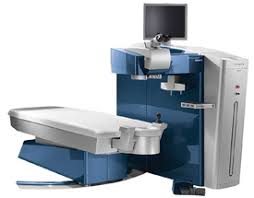What vision problems does LASIK treat?
LASIK corrects a variety of common vision problems, including myopia (nearsightedness), hyperopia (farsightedness), astigmatism (irregular cornea), and presbyopia (“aging eyes”).
Vision prescriptions are measured in “diopters” – a measurement of the focusing power of the eye. Advanced laser vision correction procedures can a treat and range of prescriptions including:
+6.00 Diopters of hyperopia
Astigmatism up to 6 diopters
Nearsightedness up to -12.00 diopters
LASIK is done in two steps:
First, the surgeon uses a femtosecond laser or a microkeratome to make a micron-thin, circular flap in the cornea – the surface of the eye. This takes just a few seconds. The surgeon gently moves the flap to expose the layer of tissue where the vision correction treatment will happen.
In the second step, a computer-guided excimer laser permanently reshapes the corneal tissue to improve its focusing ability. The flap is then laid back in place to act as a natural bandage, protecting the reshaped portion of the cornea while it heals. These two steps are virtually painless.
Does LASIK hurt?
LASIK eye surgery uses numbing drops to anesthetize the eye before and during the procedure. Patients feel some pressure from the eyelid holder used to prevent blinking. Otherwise, numbing and lubricating drops help to keep the patient comfortable during the procedure.
Are you awake during LASIK?
Yes. The surgeon needs you to be able to focus your eye during the procedure. However, the numbing drops and the valium or other sedative will keep you comfortable and calm. You don’t need to worry; if your eye moves, the laser’s tracking capabilities follow your eye. If you sneeze or abruptly move your body too much, the laser automatically turns off.
How effective is it?
The LASIK success rate is well-understood based upon data from thousands of clinical studies looking at outcomes and patient satisfaction. The latest research reports:
99 percent of patients achieve better than 20/40 vision
More than 90 percent achieve 20/20 or better
LASIK eye surgery also has one of the highest patient satisfaction rates of any elective procedure: more than 96 percent. Many patients have better vision than they did with their best glasses prior to surgery.
How do I find out if I’m a good candidate?
Having a thorough eye exam and consultation with a highly qualified surgeon is how you find out if you are a good candidate for LASIK or other laser vision correction procedures. It is important because, on average, 15-20 percent of patients aren’t considered candidates for LASIK (but might be for another vision correction procedure).
LASIK is FDA-approved for people aged 18 and older
A stable prescription, meaning your prescription hasn’t changed in two years
You and your eyes should be generally healthy and free of diseases, injuries, and infections
Is LASIK safe?
LASIK is among the most studied, and thus safest, elective procedures. More than 7,000 clinical studies have been conducted and published about LASIK. Bottom line: there is a tremendous amount of data supporting the safety and effectiveness of laser vision correction.
Dr. Neil B. Griffin is one of the leading ophthalmologists in the area and specializes in cataract and LASIK surgery in Myrtle Beach. He is committed to providing world class surgical technology and the most advanced vision diagnostics to the South Carolina and Myrtle Beach area. Griffin Eye Center offers the latest in cataract surgery with the most advanced Intra-Ocular Lenses available and offers the only state-of-the-art on-site LASIK suite in the local area for the best Laser Vision Correction possible.
To learn more about Laser Vision Correction or make an appointment for a free LASIK screening visit us at griffineyecenter.com.
